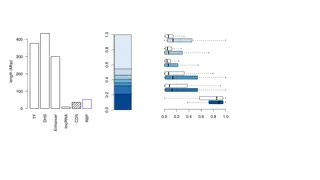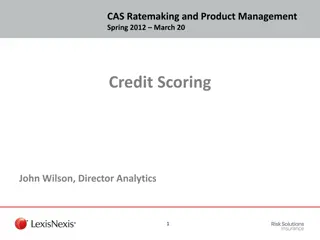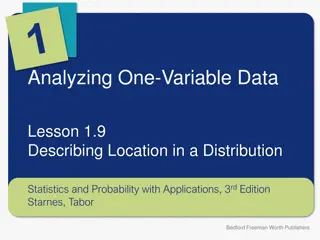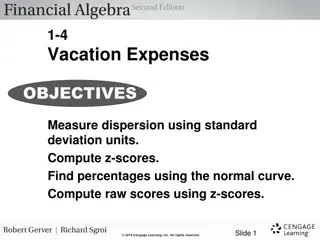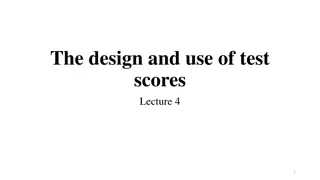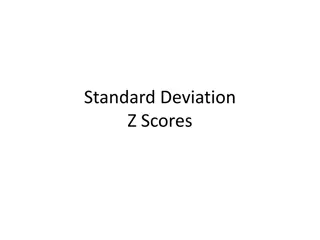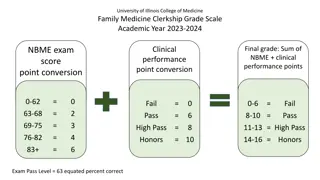Understanding Z-Scores in Data Analysis
Z-Scores are standardized measurements that indicate how far a data value is from the mean in a dataset. By calculating Z-scores, analysts can compare different data points and understand their relative positions within the distribution. This summary covers the concept of Z-scores, how to calculate them using the standardized Z-score formula, the empirical rule related to Z-scores, and applications of Z-scores in comparing exam scores, heights of individuals, and calculating probabilities.
Download Presentation

Please find below an Image/Link to download the presentation.
The content on the website is provided AS IS for your information and personal use only. It may not be sold, licensed, or shared on other websites without obtaining consent from the author. Download presentation by click this link. If you encounter any issues during the download, it is possible that the publisher has removed the file from their server.
E N D
Presentation Transcript
Unit 6: Data Analysis Z-SCORE
Z-Scores are measurements of how far from the center (mean) a data value falls. Ex: A man who stands 71.5 inches tall is 1 standardized standard deviation from the mean. Ex: A man who stands 64 inches tall is -2 standardized standard deviations from the mean.
Standardized Z-Score To get a Z-score, you need to have 3 things 1) Observed actual data value of random variable x 2) Population mean, also known as expected outcome/value/center 3) Population standard deviation, Then follow the formula. =x z
Empirical Rule & Z-Score About 68% of data values in a normally distributed data set have z-scores between 1 and 1; approximately 95% of the values have z-scores between 2 and 2; and about 99.7% of the values have z-scores between 3 and 3.
Z-Score & Let H ~ N(69, 2.5) What would be the standardized score for an adult male who stood 71.5 inches? H ~ N(69, 2.5) Z ~ N(0, 1)
Z-Score & Let H ~ N(69, 2.5) What would be the standardized score for an adult male who stood 65.25 inches?
Comparing Z- Scores Suppose Bubba s score on exam A was 65, where Exam A ~ N(50, 10) and Bubbette s score was an 88 on exam B, where Exam B ~ N(74, 12). Who outscored who? Use Z-score to compare.
Comparing Z-Scores Heights for traditional college-age students in the US have means and standard deviations of approximately 70 inches and 3 inches for males and 165.1 cm and 6.35 cm for females. If a male college student were 68 inches tall and a female college student was 160 cm tall, who is relatively shorter in their respected gender groups? Male z = (68 70)/3 = -.667 Female z = (160 165.1)/6.35 = -.803
What if I want to know the PROBABILITY of a certain z-score? Use the calculator! Normcdf!!! 2nd Vars 2: normcdf( normcdf(lower, upper, mean(0), std. dev(1))
What if I know the probability that an event will happen, how do I find the corresponding z-score? 1) Use the z-score formula and work backwards! 2) Use the InvNorm command on your TI by entering in the probability value (representing the area shaded to the left of the desired z-score), then 0 (for population mean), and 1 (for population standard deviation).
P(Z < z*) = .8289 What is the value of z*?
P(Z < x) = .80 What is the value of x?
P(Z < z*) = .77 What is the value of z*?



